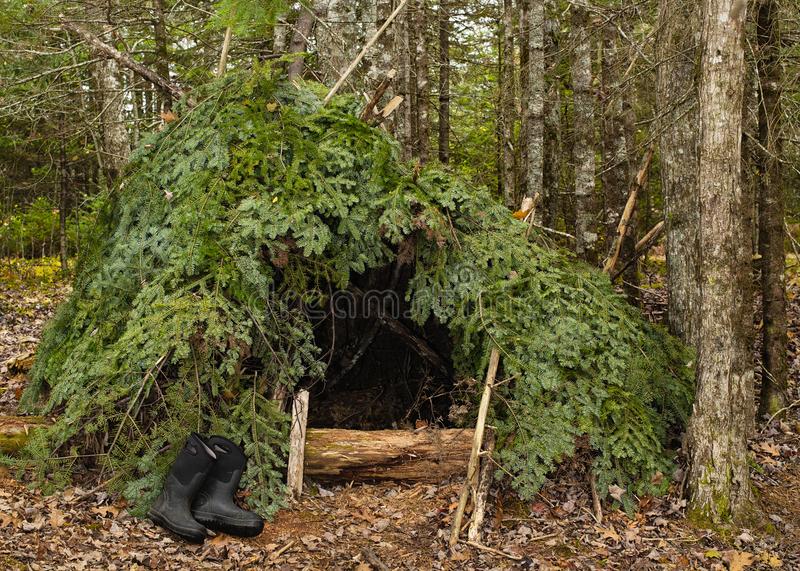When you walk or drive through the wilderness, the road seems endless. The gaze has nothing to catch on for many kilometers. There is nothing around except plants, dry sand and heat. This article provides ways to survive in the wilderness in case your car breaks down and you get stuck in the wilderness. With their help, you can get water and wait for help or get to the nearest settlement.
Part 1. Prepare to survive in the wilderness emergencies
1. Wear clothes that you sweat less in.
Your body loses moisture mainly through sweating. Try to hide your skin with loose, white or light clothing. The fabric will absorb sweat, slowing down its evaporation from the surface of the skin and thereby reducing moisture loss. This is why it is best to wear a cotton T-shirt rather than a sweat-wicking fabric. Put on a lightweight windbreaker over the top.
- Wear a wide-brimmed hat, sunglasses, and gloves.
- Bring warm woolen clothing with you. In case of an unforeseen situation, the night can find you in the wilderness, and at night it is quite cold there.
- Light-colored clothing reflects the sun’s rays better, but dark clothing tends to provide better protection against ultraviolet radiation, which can cause skin burns. Look for white clothing with a UV protection factor (UPF) of 30+.
2. Take plenty of water with you.
Whenever traveling through the wilderness, take more water than you plan to use. When walking under the scorching sun and 40ºC heat, the human body releases an average of about 900 milliliters of sweat per hour. In the event of an unforeseen situation, spare water will be useful to you.
- Distribute the water in several containers. Thus, you will protect yourself from complete loss of water if it suddenly flows out of one container.
- Place containers of water in a cool place out of direct sunlight.
3. Bring nutritious food with you that is lightweight and space-saving.
Energy bars, pemmican (meat concentrate), jerky, or a mixture of dried fruits and nuts work well. Experiment ahead to see what works best for you. If the car breaks down and you are forced to walk to the nearest settlement, you will have to take only the essentials with you.
- Take food with salt and potassium with you – these substances are excreted from the body along with sweat. This will help you avoid heat exhaustion and conserve more water. However, if you’re dehydrated, excess salt can make your condition worse.
- In a desert emergency, food does not play a primary role. If you are experiencing a lack of water, you should eat little and only in order to maintain your strength to survive in the wilderness.
4. Stock up on the things and tools you need to survive in the wilderness.
You will need the following:
- Durable life blankets
- Rope
- Water purification tablets
- First aid kit
- Fire kit
- Powerful flashlight or spotlight. The LED flashlight lasts longer.
- Knife
- Compass
- Signal mirror
- Safety glasses and a dust mask or bandana (in case of dust storms)
Part 2. Tactics to survive in the wilderness
1. Try to move around at night.
In the event of a desert emergency, it is best not to move around during the day. During cooler nights, you can walk further and avoid the risk of heatstroke. In hot climates, this simple tactic will save you up to three liters of water per day.
2. In the daytime, you are in cover.
If you don’t have a shaded car, choose a location that has the least sunshine throughout the day, pull ropes between two tall objects, and throw a sturdy life blanket over them. Place some light twigs over the top of the blanket and throw another rescue blanket (or light Mylar wrap) over them. A layer of air between the two blankets will act as an insulating layer to keep your hideout cooler.
- Create a shelter in the evening or at night. If you make it during the day, it will contain hot air.
- You can also take shelter under an overhanging rock or in a cave, but approach such a place carefully, as there may be animals hiding there.
3. Give distress signals.
Making a fire is a great way to call for help, as you can see smoke during the day and fire at night. While driving, use the signal mirror to reflect the light towards passing planes and passing cars.
- If you plan to stay in one place until help arrives, place the letters SOS or another message on the ground made of stones or other objects that can be read from above.
4. Decide whether to stay put.
If you have an adequate supply of water and someone knows where you are headed, it is best to stay in one place while waiting for help. As you move, you will get tired and will use up your water supply much faster, unless you find it along the way. If you have a meager supply of water, you will have to look for it. Without water, you cannot last longer than a couple of days.
5. Find a water source
If it has rained recently, water may have remained under rocks and in shady places. However, more often you have to look for groundwater sources coming out to the surface:
- Follow the trails of animals leading down, pay attention to birds circling above something and even flying insects.
- Look for green vegetation, especially large broadleaf plants.
- Follow canyons or up dry riverbeds and look out for depressions, especially on the outside of the bend.
- Look for a solid rocky slope where rainwater could drain into the soil. Dig in the sand or soil at the base of such a slope.
- In populated areas, look for buildings and sewage collection gutters. When the sun is low on the horizon, its rays are reflected from distant metal objects and objects to collect water.
6. Try to get to the groundwater.
When you find one of the objects listed above, dig a hole about 30 centimeters deep in the soil. If you feel the soil is wet, expand the depression to about 30 centimeters in diameter. Wait a few hours for the hole to fill with water.
- Always try to purify the water you find . However, if you have no other choice, drink unpurified water. Even if you get sick, symptoms will appear after a few days, while dehydration will show up much earlier.
7. Look for water wherever you can.
In addition to groundwater, dew can be collected, which falls on plants before dawn. You can also look for water in empty tree trunks. Absorb the moisture with a well-absorbent cloth and squeeze it into a container.
- Pay attention to stones buried in the ground – by morning their lower surface cools down noticeably. Turn these stones over before dawn to allow some moisture to condense on them.
Part 3. Recognizing hazards
1. Watch for possible signs of dehydration.
Often people do not calculate their strength and underestimate the amount of water they will need. Trying to severely restrict your water intake is wrong and could cost you your life. Drink plenty of water if you notice any of the following symptoms:
- Dark color and strong odor of urine.
- Dry skin
- Dizziness
- Weakness
2. Relax if you feel heat exhaustion.
If you feel dizzy or nauseous, or your skin becomes cool and clammy, try to find shade immediately. Sit down and do the following:
- Take off or loosen your clothes
- Drink some sports drink or lightly salted water (about 5 milliliters, which is one teaspoon of salt per liter of water).
- Apply a wet cloth to your skin to cool down faster.
Warning: If you do not take immediate action, heatstroke is possible, which is accompanied by muscle cramps and redness of the skin in the absence of sweat. Ultimately, heatstroke can lead to organ damage and death.
3. Beware of dangerous animals.
Most mammals and reptiles will stay away from you on their own, especially if they are alone. Stick to the same line of behavior and be careful not to accidentally bump into any animal. If possible, learn about the region’s wildlife in advance in order to be prepared for possible encounters with its representatives.
- Be sure to poke your hand with a stick before reaching into any secluded place (for example, under a pile of stones). Scorpions, spiders or snakes can hide in such places.
- In areas where killer bees live, stay away from bee hives.
4. Avoid thorny plants.
Avoid touching the cacti and keep in mind that some types of cactus will sprinkle the ground around them with seeds and thorns. While not necessary, it is best to avoid areas where cacti are growing. Carelessness can lead to cuts and infections.
Advice to survive in the wilderness
- If you find it difficult to find a place where there might be water, climb up the hill and look around.
- If you are in the wilderness for a long time, you will get used to it a little. However, the acquired habits will pass soon after you leave the wilderness. It is impossible to train yourself to drink less water.
Warnings to survive in the wilderness
- Most cacti are poisonous. You can eat the fruit, but do not try to cut open the part covered with needles and eat the pulp inside it, unless you know for sure that it can be done.
- Snakebite kits are usually useless and even harmful. There are several methods you can use to treat a snakebite yourself.
- River beds and reservoirs for collecting water often dry up completely. Don’t rely on the map to find water.
- Typically, solar watermakers (vessels with a plastic cover on top) are completely useless in the wilderness. It will take long days for the water maker to have enough water, so you will use up more sweat when burying the vessel in the ground.
Read to take also: 10 Tips For Traveling Light With Cabin Baggage!



